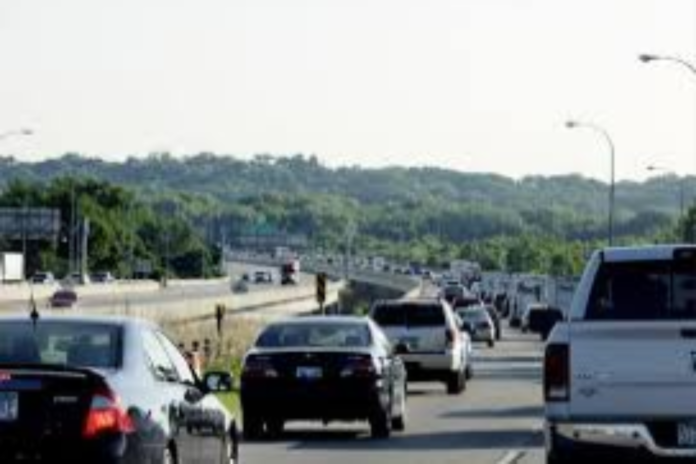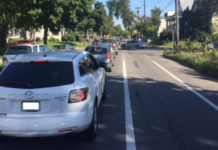Why does it seem to take a tragedy or natural disaster for MnDOT to come around and add more traffic lanes in the Twin Cities freeways? The I-35W bridge collapse forced MnDOT to increase capacity by squeezing more lanes into existing space by restriping the roads, using shoulders and other tricks.
This spring flooding on the Minnesota River led the state agency to get creative again for the sake of commuters on Highway 169 and the Bloomington Ferry Bridge. MnDOT added a lane on the existing roadway to ease congestion for the nearly 100,000 daily commuters.
But just when motorists began to get used to the extra room on the road, MnDOT took it all back, repainting and returning the road to its previous configuration over the weekend. The move drove a Shakopee commuter to contact American Experiment out of frustration bordering on desperation.
The now-temporary lane opening has provided a short experiment of how traffic on 169 could be with new lanes and I’m hoping this might be worth investigating as an argument for, at least, keeping these lanes as they are today and, at most, adding more lanes on MN highways general.
Twin Cities traffic congestion was the worst on record last year. But MnDOT has no intention of adding significantly more miles of lanes to metro freeways. For the last decade state policy has put increasing emphasis on transit, biking and walking to the detriment of building more miles of freeways and roads.
No wonder a MnDOT spokesman essentially laughed off the suggestion of adding a permanent lane to 169 in the Star Tribune.
With 2017 traffic counts showing that Hwy. 169 carries 98,000 vehicles a day between the Minnesota River and Pioneer Trail — with traffic jams common during the morning commute — a third lane would come in handy. But that’s not in the immediate future. MnDOT would have to study the social, economic and environmental impacts of adding a third lane, [MnDOT spokeswoman Christine] Dufour said. Plus, the agency would have to come up with the money, and “unfortunately, MnDOT does not have funding to expand Hwy. 169 at this time,” she said.
Clearly the experiment with an additional lane on Highway 169 proved to be a success that benefited motorists. But commuters should consider themselves lucky. Usually MnDOT eliminates the extra lane within weeks, rather than months, as soon as the water levels drop.


















